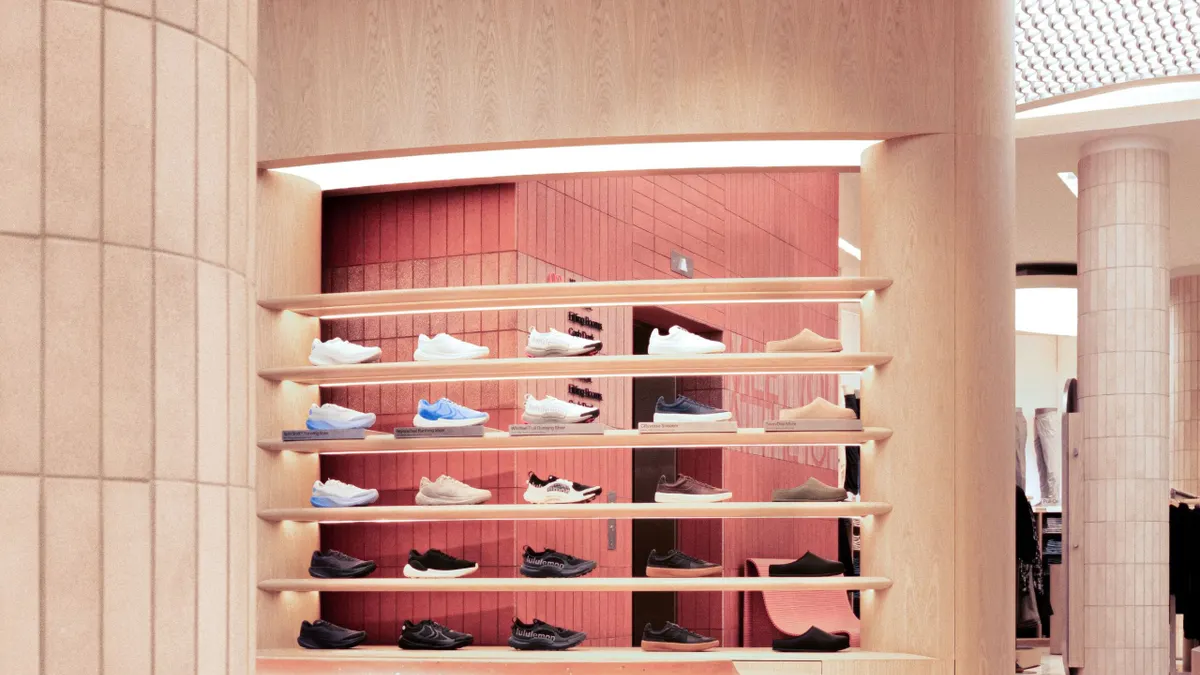Same-day delivery. Millennial mindsets. Contactless payments. While some retailers are trying to cash in on the latest trend and adjust their businesses to survive in the future, the “future” of retail may not be what you think.
In two reports released in April, The Future of Shopping and Forrester Research eCommerce Forecast, 2014 To 2019 (US), Forrester Research analyst Sucharita Mulpuru stakes out a few positions on the future of e-commerce and retail that suggests that businesses may not be investing in the right tools for future success.
Rather than focus on futuristic, hyped-up tools and gimmicks, Mulpuru suggests that retailers focus their energy on basic economic forces, brick-and-mortar, and good store personnel.
Retail Dive takes a look.
“It’s the economy, stupid”
In Mulpuru's heavily researched work The Future of Shopping, she writes that while retailers right now are fixated on the increasing exit of Baby Boomer shoppers and the arrival of heavy-spending millennials, they may not be appreciating how much basic economic forces affect shoppers of all generations.
Mulpuru looked at labor and census data from the past 40 years and has concluded that technological shifts affect all people regardless of age. And she says that, in fact, thanks to shrinking real household incomes since the 1970s in the U.S., younger people have much less spending power than their parents and grandparents.
“Older consumers have significantly greater financial power and, in aggregate, spend significantly more than consumers under 35,” she writes, noting that in 1973, households of people over 55 drove 25% of shopping spend and by 2013 drove 35%.
Meanwhile, retailers are mistaking their own tech capabilities or other efforts as failing to reach younger shoppers, when, well, “it’s the economy, stupid,” Mulpuru's research suggests.
“When retailers see lower sales figures from these demographics, they worry that they failed to address that shopper’s needs or that startups like Instagram or Venmo change how people consume. Declines in real income are bigger reasons shoppers spend less and such drops have affected young consumers more than any other group.”
In fact, younger shoppers will become an important spending demographic — when they age.
“While consumers in their early 20s have the lowest average household incomes, as those consumers age into the next cohort (25 to 34), they see their incomes rise significantly,” she says in her report. “Over the last forty years, shoppers over 35 consistently control 70% or more of all shopping spend.”
That suggests that, as many economists have been saying, sluggish wage growth in our current economic environment is the crucial factor in retail consumption as the other costs of living continue to rise. Wage stagnation is driving spending down and is inhibiting consumers’ willingness to use credit cards, experts say.
“I have been impressed with how reluctant consumers are to increase their debt on especially credit cards,” says Richard Curtin, director of the University of Michigan Survey of Consumers. “I wouldn’t expect a sharp increase in credit-card debt, and that’s going to limit spending at the retail level.”
Could the ‘Spotify of shopping' be a reality?
Let’s put away the now-tired notion that physical stores are going extinct. Pure-play e-commerce retailers like Warby Parker and Birchbox have noticed that people like to experience stores, look and touch, and grab things in real time.
What they are doing is morphing, and that includes some innovative thinking and new technology. Customization, thanks in part to 3-D printing technologies, for example, will help retailers give the customers exactly “what she wants.”
“Apparel in the future will be personalized— and tailored to our unique proportions,” writes Paco Underhill, CEO of market research company Envirosell, in the Wall Street Journal. “The apparel factory of our future is robotic and compact. In Seoul, the epicenter of the digital world, we see the prototypes of that future shop where—on the showroom floor—you have a body scanner linked to a magic box that cuts, stitches and glues. What comes out the other side is simple and basic in 2015, but in it, we see our future.”
Mulpuru doesn’t use the same futuristic tone, and sees 3-D printing in the far-out future. But she agrees that technology will enable personalization, especially when it comes to apparel.
“The ‘Spotify of shopping’ doesn’t exist yet but technology vendors promise we are getting closer,” she writes. “Recommendation engines on websites were phase 1 of personalization, but companies like Datalogix and even Facebook are working to create a universal ‘purchase graph’ of shoppers’ browse and buy behavior in stores and online… "
Companies like True Fit, which aggregate massive databases of brands, sizes, and shapes, could represent a significant improvement in the apparel and footwear industry by reducing waste and better matching shoppers to their needs," she continues. "They also can ultimately improve the sell-through of apparel.”
Marketplaces helping smaller retailers
Mobile and wide availability of high-speed broadband, plus marketplaces like Etsy, eBay, and Amazon have enabled smaller retailers to win at the e-commerce game. Both Underhill and Mulpuru note this. While Underhill says that artisanal items will flourish as a new type of luxury retail, Mulpuru says that, more broadly, smaller retailers now have advantages and could crowd out big box stores.
Omnichannel — not an option
Certainly by now we’ve learned that retailers must leverage the technology that allows them, their customers, and their supplies to view their inventory. Retailers that are on top of that can make adjustments quickly, refill bestselling items, and get through inventory more quickly. There should really be no seams showing between channels.
That means services like “endless aisle” capabilities and ship-from-store, which have to be designed and executed well in order to prevent bleeding of cash. And, e-retailers, delivery is part of doing business with you customers, not a profit center, Mulpuru says.
“Companies that continue to view shipping as a profit center will perish,” she says. “Shipping is consistently cited as the top consideration for why consumers buy from a retail website and companies need to budget for it aggressively. That said, it isn’t essential to offer free shipping without a threshold at all times. Rather, retailers should benchmark their competitive set and act accordingly.”
Mobile is critical, but beware of technological innovations becoming distractions, says Mulpuru, when there are more important bread-and-butter uses of technology.
“Hyped distractions like location technologies and same-day delivery services … fail to address the types of cost savings retailers need to desperately address,” she writes. “Instead, digital innovations and technologies that either get shoppers to buy more (driving incrementality though new or better products or an innovation in the shopping experience) or enable retailers to spend less (driving efficiency by making labor, inventory, or real estate more efficient) will be the winners.”
Finally, add Mulpuru to the list of retail experts who say good store personnel are essential.
“Lackadaisical cashiers may now be a staple of physical retail, but there will be little tolerance or budget to support them in the future,” she says. “Companies like Trader Joe’s and The Container Store, which pay fewer store associates more in order to get higher quality, and more cross-training will become the norm for high-performing stores.”






















